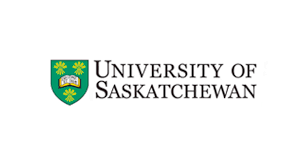University of Saskatchewan: New project has big impact on bison genome biobank’s development at USask
The BIG project will apply new genomics solutions to better protect and conserve the wood bison population in Canada. It’s directly connected with the massive $17-million-dollar research initiative called “Integrated omics for sustainable animal agriculture and environmental stewardship” (IntegrOmes) that’s based at the USask Livestock and Forage Centre of Excellence (LFCE).
Funding for IntegrOmes was made possible by the Canada Foundation for Innovation’s Innovation Fund and included contributions from federal, provincial and private agencies. USask veterinarian and reproductive biologist Dr. Gregg Adams leads IntegrOmes’ multi-agency research team.
“IntegrOmes will provide the infrastructure and equipment that our research team needs to broaden our research capabilities, while this new funding from Genome Canada will supply our team with the operating funds we need to actually do the research,” said Adams, a professor in the Department of Veterinary Biomedical Sciences at the Western College of Veterinary Medicine (WCVM).
“The BIG project provides a vehicle for us to interact with scientists with expertise in other fields such as microbiology, epidemiology, reproductive technologies, genomics, microbiomics and bioinformatics. It’s very exciting.”
Adams is the academic lead for the BIG project while Parks Canada veterinarian and WCVM adjunct professor Dr. Todd Shury is the receptor lead for the Genome Canada-funded initiative. Together, they spearheaded the BIG proposal and shared the project’s planning and composition with eight other co-investigators from the Toronto Zoo, Agriculture and Agri-Food Canada, Vaccine and Infectious Disease Organization (VIDO), University of Alberta and University of California-Santa Cruz.
“A major facet of IntegrOmes is upgrading the Native Hoofstock Centre at the LFCE where our bison are maintained, and this will form the headquarters of our bison genome biobank,” said Adams.
Genome biobanks are used to store and redistribute genetic material to preserve genetic diversity. Researchers will use genomic tools for disease surveillance and vaccine development. They will also use the biobank resources to restore the natural genetic composition and genetic diversity of Canada’s plains bison and wood bison populations—ensuring that the species will survive for future generations. Their work has the support of the Assembly of First Nations and other Indigenous groups.
Research findings gained through the team’s work will also play a key role in improving the productivity, efficiency and sustainability of Canada’s beef cattle industry. One of IntegrOmes’ primary goals is to make it easier for cattle producers to identify and breed animals with better meat quality, stronger disease immunity, good maternal behaviour and other desired traits.

